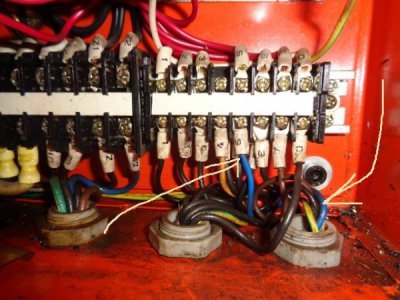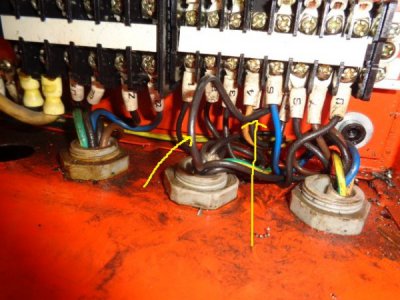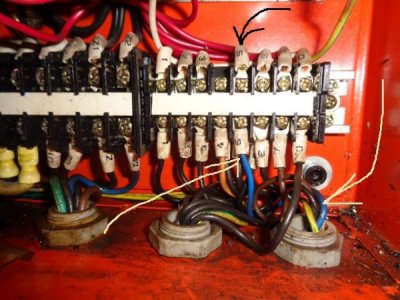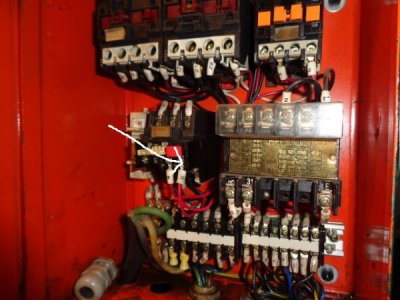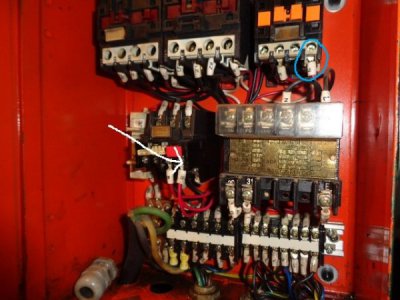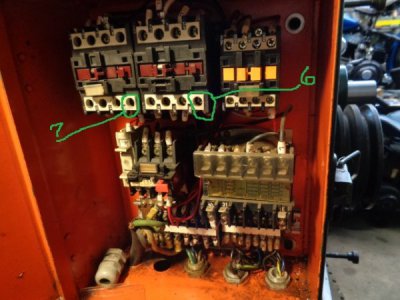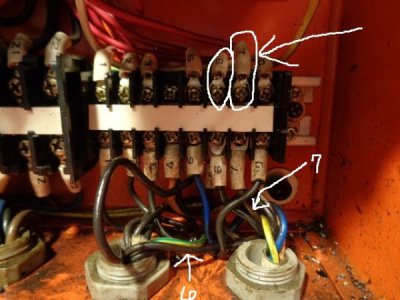In comments below, I am only talking about the left two (Red plunger) contactors and ignoring the right 3rd contactor (Yellow Plunger).
Both the two left contactors are wired through each other
So Left contactor un-energized 21NC connects to 22NC which should feed over to A2 (or A1) on the right contactor
So right contactor un-energized 21NC connects to 22NC which should feed over to A2 (or A1) on the left contactor
This is a protection so if you are in forward (say left contactor is energized) this opens the contact 21NC to 22NC on the left contactor which breaks the ability for the right contactor to operate and vice versa.
You should have a traceable wire that feeds from each of the two left contactors out to your control switch.
Lets start by finding them
control switch (drum switch?)
Here is a picture of the electrical panel
Both contactors are identical
top left to right on each contactor are numbered as follows.
L1 L2 L3 NC21
bottom of both contactors are marked
T1, T2, T3 and NC22
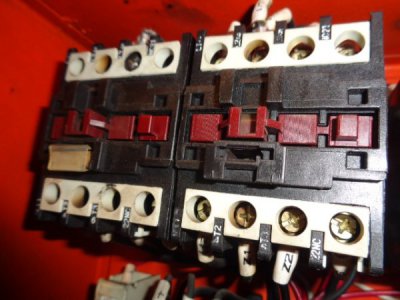
I finally found A2 (see don't see anything that is marked A1)
U2 Z1 and Z2 all jump over to the same terminals on thht contactor
#7 red wire feeds all the way down to the lowest right part of the cabinet, what I would call a power strip
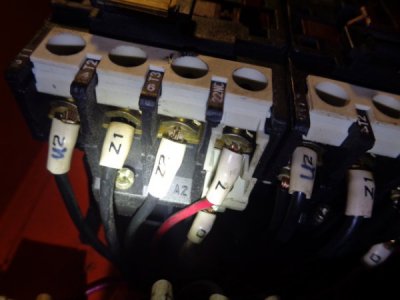
Red #6 also goes to power strip.
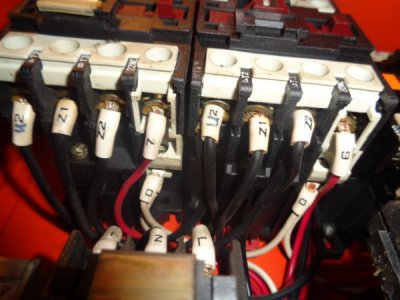
I bought this lathe brand new in 1999.
Today is the first time the inside of this electrical box has EVER seen a screwdriver


